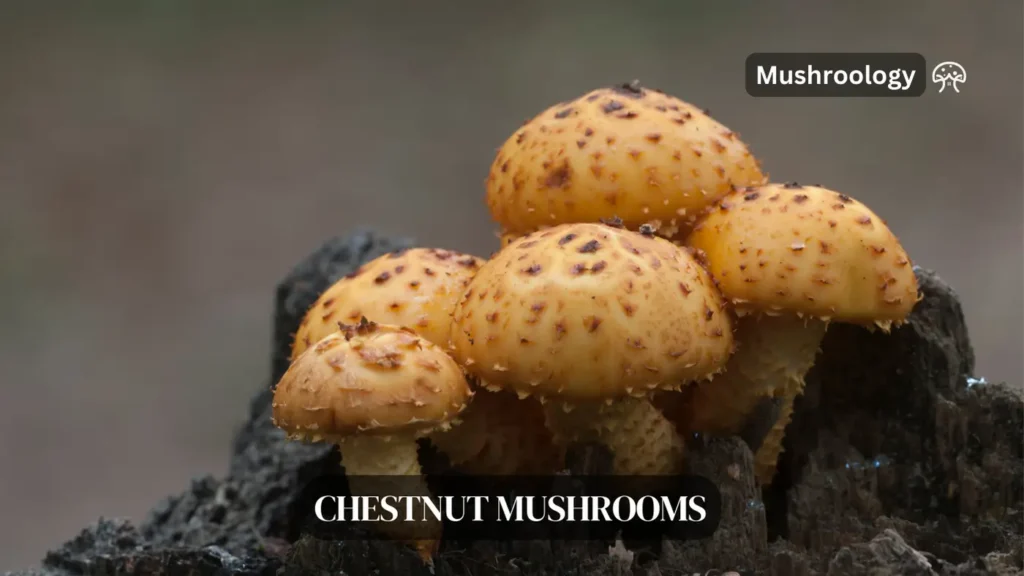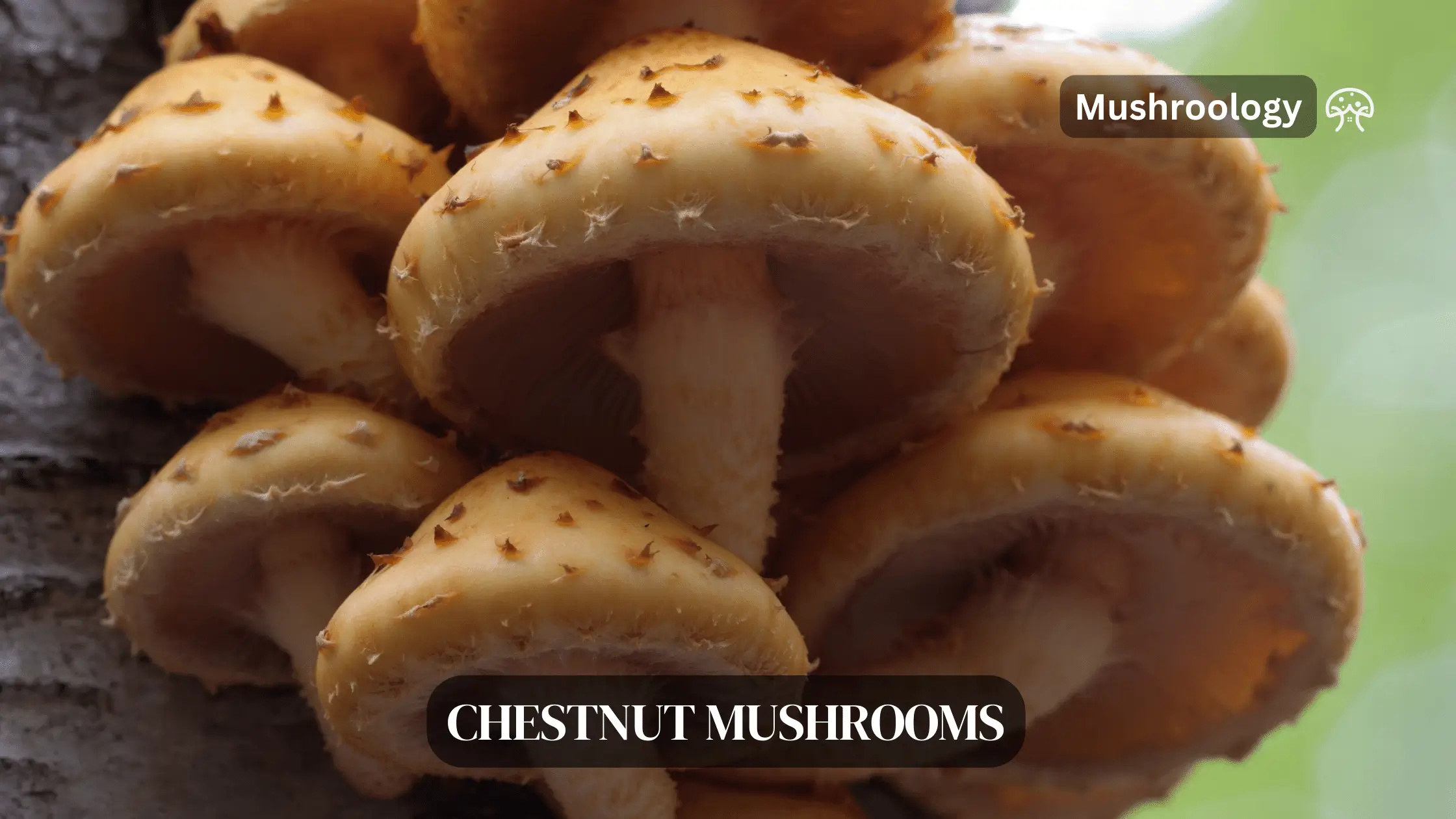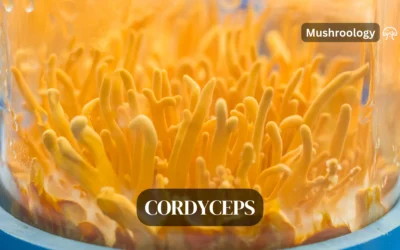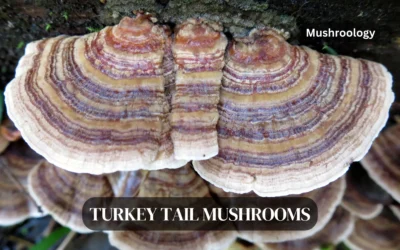What are chestnut mushrooms?
Chestnut mushrooms, also known as cinnamon caps mushrooms, are a fascinating species of fungi prized for their culinary versatility, nutritional benefits, and ecological role. These small to medium-sized mushrooms are characterized by their rich, earthy flavor with a slightly nutty undertone, making them a favorite in gourmet cooking.
The scientific name of the chestnut mushroom is Pholiota adiposa. This species is also commonly known as the cinnamon cap or fat Pholiota. The name “Pholiota” comes from the Latin word for “scaly,” referring to the mushroom’s textured cap, while “adiposa” derives from the Latin word for “fat” or “greasy,” describing its shiny or slimy appearance when wet.
Pholiota adiposa has several popular names across different regions and languages:
- Chestnut Mushroom
- Fat Pholiota
- Fatty Pholiota
- Kuritake
- Brick Top
- Cinnamon Cap
- Shimeji (Japanese)
- Chestnut Bolete
- Chestnut Agaric
- Chestnut Pholiota
- Numerisugitake (Japanese)
- Slijmsteelbundelzwan (Dutch)
- Yellow-cap fungus
- Fat mushroom
- Slimy scalycap
Where can you find the chestnut mushrooms in nature?
Chestnut mushrooms are saprophytic fungi that thrive on decaying hardwoods like beech, oak, maple, and elm. They play a critical role as decomposers in temperate forests across North America, Europe, and parts of Asia. Occasionally parasitic on weakened trees, they can be found growing on stumps, fallen logs, or at the base of living trees during late summer to fall. Their ability to adapt to various environments makes them resilient and relatively easy to cultivate.
Description and identification
Pholiota adiposa belongs to the genus Pholiota within the family Strophariaceae in the phylum Basidiomycota. This genus comprises wood-rotting saprotrophic mushrooms with distinctive morphological features that aid in their identification.

Chestnut mushrooms can be identified by the following key characteristics:
- Cap: 2-10 cm in diameter, convex becoming flat, yellow to chestnut brown in color with darker scales that are denser in the center. The cap surface is slimy when wet.
- Gills: Crowded, adnate, pale yellow when young turning rusty brown with age.
- Stem: 2-8 cm long, 0.5-1.5 cm thick, cylindrical, yellow with brown scales below a faint ring zone. Stems often join together at the base.
- Flesh: Yellowish in color.
- Spore Print: Rusty brown
- Habit: Grows in dense clusters on hardwood stumps and logs
Chestnut mushrooms have a mild, nutty flavor and slightly crunchy texture that holds up well when cooked. However, proper identification is crucial as there are some poisonous look-alikes such as the deadly Galerina marginata.
Supplies list for growing Chestnut Mushrooms

Before you begin your chestnut mushroom growing journey, it’s important to gather all the necessary supplies. Here’s what you’ll need:
Chestnut mushroom Spawn or Liquid Culture
The first and most important supply is the chestnut mushroom spawn or liquid culture. Spawn is basically mushroom mycelium that has been grown on a substrate like grain or sawdust. Liquid culture is a liquid solution containing mushroom mycelium. You can purchase chestnut mushroom spawn or liquid culture from reputable suppliers online or at specialty mushroom shops.
Hardwood substrate
Chestnut mushrooms prefer to grow on hardwood. A common substrate recipe is 78% hardwood sawdust, 20% wheat bran, 1% sugar, and 1% gypsum. The hardwood sawdust provides the main food source, while the bran, sugar and gypsum provide extra nutrients and help with moisture retention. You can source these ingredients individually or purchase pre-mixed mushroom substrate.
Mushroom grow bags
Mushroom grow bags are specially designed plastic bags with filter patches that allow for gas exchange while preventing contaminants from entering. They come in various sizes, but 5-10 pound bags work well for home growing. Look for bags that are thick and durable, with a 0.2-0.5 micron filter patch.
Pressure Cooker or Large Pot
To pasteurize your substrate and prevent contamination, you’ll need a pressure cooker or a large pot. A pressure cooker allows you to reach higher temperatures and sterilize the substrate more thoroughly. However, a large pot can also work for pasteurization if you don’t have access to a pressure cooker.
Clean Growing Environment
Chestnut mushrooms require a clean, temperature-controlled environment to fruit properly. A spare room, basement, or garage can work well as long as you can control the temperature, humidity, and light. You’ll want to be able to maintain a temperature between 60-70°F (15-21°C), humidity between 85-95%, and indirect light exposure.
Other Supplies
A few other handy supplies include:
- Rubbing alcohol for sterilizing surfaces and equipment
- Spray bottles for misting and maintaining humidity
- Thermometer and hygrometer for monitoring temperature and humidity
- Gloves and face mask for sterile inoculation
- Sharp knife or scalpel for cutting bags
- Shelving or racks for incubating and fruiting blocks
By gathering all these supplies before you start, you’ll be well-prepared to begin your chestnut mushroom growing adventure. In the next section, we’ll go over the step-by-step process of inoculation, incubation, and fruiting.
How to grow chestnut mushrooms on logs?
Chestnut mushrooms are wood-loving fungi that thrive on hardwoods like oak, beech, or maple. These dense woods decompose slowly, giving your mushrooms a long-term food source. Plus, once you set up your logs, they’ll keep producing mushrooms season after season with minimal effort. It’s a sustainable and cost-effective way to grow!
Step 1: Choose the right logs
First things first—select freshly cut hardwood logs. Ideally, they should be:
- 3–4 feet long and 4–6 inches in diameter.
- Free of rot, mold, or insect damage.
- Cut during late winter or early spring when the sap content is low (this reduces contamination risks).
Let the logs rest for 2–4 weeks after cutting to allow natural antifungal compounds to break down. But don’t wait too long—logs should still be fresh when you inoculate them!
Step 2: Inoculate the logs
Here’s where the magic begins! You’ll need either plug spawn or sawdust spawn to introduce the mushroom mycelium into the logs.
- Drill Holes: Use a 5/16-inch bit to drill holes about 1 inch deep in a diamond pattern along the log. Space them 4–6 inches apart.
- Add Spawn: Insert plug spawn into each hole and tap it in with a hammer. For sawdust spawn, pack it tightly using an inoculation tool.
- Seal It Up: Cover each hole with melted beeswax or cheese wax to protect the spawn from drying out and keep contaminants away.
- Stack Your Logs: Place your logs in a shaded area with good airflow. You can stack them like a crib or lean them in an A-frame shape.
Step 3: Caring for Your Logs
Patience is key here—colonization takes about 6–12 months before you’ll see your first flush of mushrooms. During this time:
- Keep Them Moist: Water the logs during dry spells to maintain humidity but avoid soaking them.
- Provide Shade: Direct sunlight can dry out the logs, so keep them in a cool, shaded spot.
- Winter Protection: Logs can overwinter outdoors, but avoid exposing them to extreme frost.
Once the mycelium fully colonizes the log, you’ll start seeing small bumps (primordia) form on the surface—this means mushrooms are on their way!
How to grow Chestnut Mushrooms on subtstrate
Step 1: Prepare the Substrate

To create an ideal growing medium for your chestnut mushrooms, you’ll need to prepare a hardwood-based substrate. A common recipe is:
- 78% hardwood sawdust (preferably beech, oak or maple)
- 20% wheat bran
- 1% sugar
- 1% gypsum
Mix these ingredients thoroughly until evenly distributed. Slowly add water while mixing until the substrate reaches approximately 60-65% moisture content. You can test this by squeezing a handful of the mix – it should hold together without dripping water.
Next, fill your mushroom grow bags about 2/3 to 3/4 full with the moistened substrate mix. Pack it down gently to remove air pockets but don’t compact it too tightly. Leave some space at the top for the spawn.
Seal the bags with a filter patch or micropore tape to allow for gas exchange while preventing contaminants from entering. If using an autoclavable grow bag, fold the top over and secure it with a metal clamp or zip tie.
Sterilize the bagged substrate in a pressure cooker at 15 PSI for 2.5 hours. Allow to cool completely to room temperature before inoculating. If you don’t have a pressure cooker, you can pasteurize the substrate in boiling water or steam for 2-4 hours instead.
Step 2: Inoculate the Substrate
Once your substrate bags have cooled, it’s time to introduce the chestnut mushroom mycelium. If using liquid culture, shake it vigorously first to distribute the mycelium evenly.
Working in a still-air environment like in front of a flow hood or inside a glovebox, carefully open each bag. Inoculate the bags by injecting 3-5ml of liquid culture syringe or adding a layer of grain spawn across the top surface of the substrate. Use about 1 cup of grain spawn for every 5-7lbs of substrate.
After inoculation, reseal the bags, label them with the date and species, and gently mix or shake to distribute the spawn if desired. Be careful not to rip or puncture the bags.
Step 3: Incubation
Place your inoculated substrate bags in a clean area with stable temperature between 68-75°F (20-24°C) to incubate. Indirect light or darkness is fine at this stage. Avoid areas with drafts, high humidity or direct sunlight.
Over the next 2-4 weeks, the white mycelium will start to visibly spread throughout the substrate, eventually colonizing it completely. Avoid disturbing the bags during this time to allow the mycelium to grow undisturbed. The bags may puff up with built up CO2 – this is normal.
Step 4: Chestnut mushroom fruiting conditions
Once the substrate is fully colonized with no visible patches of uncolonized sawdust, it’s time to initiate fruiting. This is triggered by exposing the bags to cooler temperatures, light, humidity and fresh air.
The ideal fruiting temperature for chestnut mushrooms is generally between 18-22°C (64-72°F), though they can tolerate slightly lower or higher temperatures depending on the stage of development and environmental conditions.
Fruiting Temperature Ranges
Primordia Formation (Pinning Stage): 15-18°C (59-64°F) is optimal for initiating pins, with high humidity levels around 95% to encourage the formation of baby mushrooms.
Fruit Body Formation: Once pins develop into mushrooms, the ideal temperature increases slightly to 17-21°C (63-70°F), with the sweet spot being around 18-19°C (64-66°F). Maintaining this range ensures robust growth and prevents stress on the developing mushrooms.
Why Temperature Matters
Consistent temperatures are critical for chestnut mushroom cultivation:
- Low Temperatures: Below the recommended range, growth slows significantly, delaying fruiting and reducing yield.
- High Temperatures: Excessive heat can dry out the fruiting bodies, lead to poor quality mushrooms, and increase susceptibility to pests or diseases.
To create an opening for the mushrooms, cut a 4-inch slit or “X” on the side of each bag using a clean, sharp blade. Some growers completely remove the top of the bag. Arrange the bags on a shelf with the cut side facing outwards.
Mist the exposed substrate 2-4 times per day to maintain high humidity. Within 1-2 weeks, you should see tiny chestnut mushroom pins starting to form.
Step 5: Fruiting and Harvest
When to Harvest Chestnut Mushrooms
- Timing: Chestnut mushrooms typically take 10–14 days to mature after pinning begins, depending on environmental conditions like temperature and humidity.
- Cap Appearance: The ideal time to harvest is when the mushroom caps are fully opened but still slightly curved downward. The edges of the caps should not yet have started to curl or flatten completely, as this indicates they are overripe and may begin dropping spores.
- Gills Exposure: The gills underneath the caps should be visible but not overly darkened or releasing spores. Harvesting before spore release improves their storage quality and prevents them from becoming too soft.
- Growth Pattern: Mushrooms often grow in dense clusters, so look for uniform maturity across the cluster. It’s generally best to harvest the entire cluster at once rather than picking individual mushrooms.
How to Harvest Chestnut Mushrooms
- Twist and Pull: Gently twist the mushroom at its base and pull it out of the substrate. This method minimizes damage to the surrounding mycelium and ensures a clean harvest.
- Cutting Option: Alternatively, use a clean knife to cut the stems close to the substrate or growing block, especially if twisting risks disturbing nearby pins or immature mushrooms.
- Avoid Leaving Roots: Ensure you remove the entire fruit body, including any remnants at the base, to prevent contamination or rot in subsequent flushes.
Why Proper Timing Matters
- Harvesting too early can result in smaller mushrooms with less developed flavor.
- Waiting too long can lead to spore release, which not only reduces freshness but can also make the mushrooms softer and less visually appealing for storage or cooking.
Each bag can produce 2-3 flushes of mushrooms, spaced about 2 weeks apart. After harvesting a flush, keep the bag in fruiting conditions and a second flush may form from the same opening. Once a bag stops producing, remove it and start again with a new substrate bag.
With practice and patience, you’ll be able to grow bountiful harvests of homegrown chestnut mushrooms! While not the easiest mushroom for beginners, they are a rewarding challenge for the adventurous home cultivator.
FAQ
What is the scientific name of chestnut mushrooms?
The scientific name of chestnut mushrooms is Pholiota adiposa. They are also known by common names like cinnamon cap mushrooms, brick tops, and kuritake.
What do chestnut mushrooms look like?
Chestnut mushrooms have distinctive yellow to orange-brown convex caps measuring 2-10 cm across, covered in darker scales. The gills are pale yellow when young, turning rusty brown with age. The stems are 3-12 cm long, slender, and scaly below a faint ring zone. They grow in dense clusters on hardwood.
What is the flavor and texture of chestnut mushrooms?
Chestnut mushrooms have a mild, nutty flavor sometimes compared to shiitake but less intense. They have a firm, meaty texture that remains pleasantly crunchy and chewy after cooking.
How do you grow chestnut mushrooms?
Chestnut mushrooms can be grown at home using hardwood logs, stumps, or enriched sawdust substrate inoculated with spawn. Optimal conditions are 55-70°F (13-21°C) and moderate humidity. Outdoor log cultivation or indoor growing in bags can both yield good results.
When do chestnut mushrooms fruit?
In the wild, chestnut mushrooms fruit in the fall from August to October. When cultivated indoors, they can fruit year-round. Primordia formation takes 1-2 weeks after full colonization, followed by another 1-2 weeks until mature mushrooms are ready to harvest.
Are there any poisonous look-alikes to chestnut mushrooms?
While chestnut mushrooms are considered edible, some Pholiota species may cause reactions, especially if consumed with alcohol. Deadly Galerina marginata mushrooms are potential look-alikes. Proper identification by an expert is crucial for wild foraging.
What are the health benefits of chestnut mushrooms?
Chestnut mushrooms are nutritious, containing protein, fiber, vitamins, minerals and beneficial compounds like polysaccharides. Studies suggest they have anti-inflammatory, immune-boosting and antimicrobial properties. However, more research is needed on the medicinal potential of this species.





